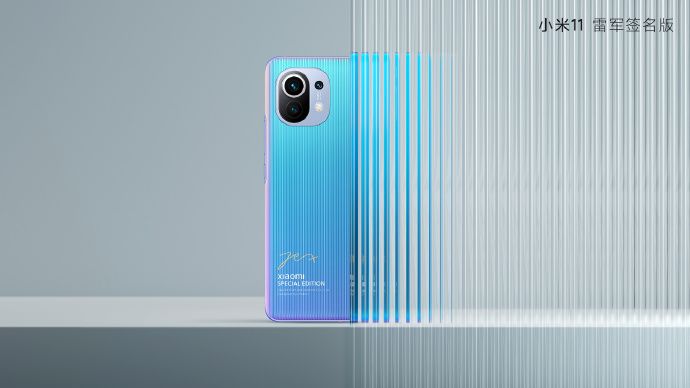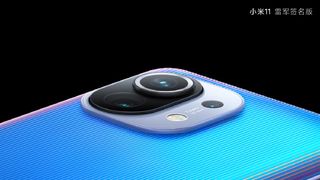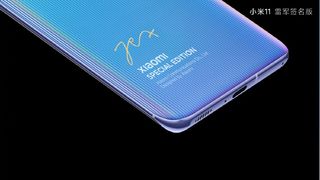After months of speculation, the Xiaomi Mi 11 is here; it’s the Chinese brand’s new flagship, building on the Mi 10 and Mi 9 along with the myriad Xiaomi phones launched through 2020.
The Xiaomi Mi 11 launch event was in China on December 28, just a few days after Christmas. We now know what the phone looks like, and its specs, but there’s probably going to be a global launch in the coming months where we see the worldwide price and availability.
This is all happening a bit early, as previous Xiaomi Mi flagships launched in February of their respective years, but the Mi 11 is months earlier than we expected/
We haven’t heard anything about the rumored Xiaomi Mi 11 Pro, or any kind of Mi 11 Lite, so there’s more we have to find out about the series. But the ‘main’ phone has been unveiled and we’ve got all the information you need below.
So read on for a teaser of what we’ll see when the Xiaomi Mi 11 rolls out everywhere else.
Cut to the chase
- What is it? The Xiaomi Mi 11, Xiaomi’s newest flagship
- When is it out? Now in China, in the next few months elsewhere
- How much will it cost? Not announced, but a mid-range price
Xiaomi Mi 11 price and availability
The Xiaomi Mi 11 price is official in China, but no-where else. We’ll list the Yuan price for the phone, as well as conversions, but it’s likely the actual launch cost will be quite different elsewhere.
For 8GB RAM and 128GB storage, the Mi 11 costs CNY 3,999 (around $610, £450, AU$800), an 8GB/256GB version is CNY 4,299 (about $660, £490, AU$870), and the top 12GB/256GB option is CNY 4,699 (roughly $720, £530, AU$950).
Though the event global price likely won’t match those conversions, it seems likely the Mi 11 will be more affordable than the Mi 10, which launched for £799 / AU$1,699 (roughly $990) with 8GB / 128GB specs.
So what about an international launch? Xiaomi tends to launch its flagships several months earlier in China than globally, so perhaps we’ll see a second event in late January or February 2021. At the event we’ll probably find out the actual Xiaomi Mi 11 price in the UK and Australia, though the company generally doesn’t launch its phones in the US.
At that second event we’ll hopefully hear about a Xiaomi Mi 11 Lite and Pro too.
Xiaomi Mi 11 design and display
It appears that the Xiaomi Mi 11 design builds on that of the Mi 10 – it looks fairly similar on the front, with a ‘punch-hole’ cut-out in the top-left corner of the screen for the fingerprint sensor.
However that screen doesn’t just curve on the left and right edges as in the Mi 10, but on all four sides, so the upper and lower edges taper too. It’s not the first phone to do this, as the Huawei P40 Pro went the same way, but it’s still a novel design.
The other big design change from the Mi 10 in the Mi 11 is its camera bump. Rather than having a slim vertical design, there’s a squarish lump here, which looks to be stepped with each lens set a different distance from the block.
The phone comes in black, white or pale blue colors, as well as two leather editions, purple and khaki. There’s no word on if this is real leather or faux-leather made from synthetic materials.
Xiaomi states the Mi 11 screen resolution is 2K – that likely means the resolution is about 1440 x 3200, depending on the aspect ratio. It’s an AMOLED panel with a 120Hz refresh rate and 240Hz touch input rate. This screen has a max brightness of 1,500nits which is pretty high for a smartphone, as most have maximums of between 500 nits and 1,000.
The phone screen has a size of 6.81 inches across, which makes it one of Xiaomi’s biggest smartphones.
A big part of the Xiaomi Mi 11 marketing material revolves around it using Corning Gorilla Glass Victus for the front and back. Corning makes the glass used in many smartphone bodies and displays and Victus is its newest version, which seems designed to be incredibly hardy and resistant to smashing.
Cameras
The Xiaomi Mi 11 has three rear cameras, one fewer than its predecessor, though quality beats out quantity.
These are a 108MP main, 13MP ultra-wide and 5MP telephoto macro, the latter of which is designed for both zoomed and close-up shots. The first two snappers match the Mi 10; the third snapper is the big improvement.
The Mi 10 had a 2MP macro and 2MP depth-sensing snapper, which we found ourselves discrediting in our full review, for their low functionality and resolution. Perhaps the Mi 11’s 5MP snapper will fix that, and it does bring the ability to zoom optically, which was missing from the Mi 10.
An intriguing new video mode here is night videography. Night mode, or low-light photography, is a bit proving ground smartphones go head-to-head in, and Xiaomi has extended that to video shooting apparently.
Xiaomi posted some Mi 11 camera samples on its Weibo account (that’s a Chinese social media platform). You can see them here.
Specs and performance
The Xiaomi Mi 11 is the first launched smartphone with the Qualcomm Snapdragon 888 chipset, which will likely be the processor used in most top-end phones in 2021 like the Samsung Galaxy S21 and OnePlus 9. Both Xiaomi and Qualcomm have touted some super-fast speeds for the chipset, but we’ll have to test the phone to know for sure.
Intriguingly, the Mi 11 has been officially certified by BOINC (the Berkeley Open Infrastructure for Network Computing), a volunteer computing scheme by which you can temporarily ‘donate’ the processing power of your smartphone to help scientists. It’s not too clear what this certification actually means, but the program’s founder, David Anderson, spoke at the Mi 11 launch to deliver the news.
Another, more understandable, tie-in here is that the Xiaomi Mi 11’s dual speakers were tuned by Harman Kardon, a popular audio brand, so it sounds like music, and the audio for TV shows and games, will sound great. HK also does the tuning for many Samsung phones.
As well as impressive speakers, the Xiaomi Mi 11 may be a music fan’s dream phone because it comes with a feature called Bluetooth Audio Sharing. This means audio can play from multiple Bluetooth-connected outputs (speakers, headphones) at once, so two people can listen to music or watch a movie on the same phone from different pairs of headphones.
The Xiaomi Mi 11 will come running MIUI 12.5 based on Android. It brings some minor tweaks to MIUI 12 including new wallpapers, security improvements, and seemingly improvements to the user interface to make better use of the dual speakers.
Battery life
The Xiaomi Mi 11 battery size is 4,600mAh – that’s okay, but it’s not the biggest Xiaomi phone we’ve ever seen. Size isn’t everything though, and until we’ve tested the phone, we can’t truly say how long it lasts.
There’s 55W wired and 50W wireless charging for powering up the phone. Like the iPhone 12, the Xiaomi Mi 11 doesn’t come with an in-box charger, so you might find yourself opting for that fast wireless charging more than if you’d been given a cable.
Finally, there’s 10W Bilateral charging, so you can use the Mi 11 as a powering mat to charge up other devices. 10W isn’t hugely fast, but it matches or beats many other phones with the same feature.

Tech journalist with over a 8 years of experience in the industry. With a passion for gaming and cutting-edge technology, I have been a driving force behind bestgamingpro.com, delivering in-depth tech updates and comprehensive product reviews. My expertise spans various tech domains, including gaming hardware, software, and emerging technologies.





